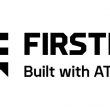The new mantra: Get out there
Sometimes just being in the room is enough. Bob Stork, owner and senior engineer for Communications International, in Vero Beach, Fla., recently discovered that opportunity often finds you at the right place at the right time when he participated in a user group seminar and product demonstration sponsored by M/A-COM.
Participating that day were representatives of the Vancouver, British Columbia, police department, who were impressed by Stork’s accounts of his dealership’s abilities and performance during the spate of hurricanes that wreaked havoc upon Florida and the Gulf Coast in August and September of 2004. Apparently, the Vancouver area also experiences its fair share of natural disasters, and the police representatives approached Stork about formally sharing their respective expertise.
“We handled three of the four hurricanes that came through here and survived,” Stork said. “Vancouver said, ‘We get earthquakes, why don’t we look at trading personnel during these times?’”
Although Stork stumbled upon the Vancouver opportunity, it occurred precisely because he was willing to leave the shop and get in front of potential customers, a strategy that is becoming increasingly crucial for land mobile radio (LMR) dealers hoping to do more than simply hang onto their businesses. With the advent of push-to-talk services, the line between traditional wireless carriers and LMR dealers is blurring, and dealers no longer can afford to take a passive approach to marketing and sales.
“The more successful dealers are taking a more proactive approach than they have in the past,” said Gary Lorenz, manager of market development. “They’re out there marketing not only their name but also the solutions that they’re selling.”
Hosting a technical seminar or product demonstration is an excellent way to accomplish this and provides myriad benefits to the dealer, said Larry Ward, M/A-COM’s vice president of sales and marketing. It gives the dealer a chance to demonstrate, as Stork was able to do, the intelligence and capabilities of the staff. It also gives the dealer a chance to learn more about the customer’s existing systems and future needs and goals.
“It gives you a chance to listen to the customer to find out what’s important to them,” Ward said.
Most important, as Lorenz suggested, it gives the customer a hands-on opportunity to try new equipment and systems and offers a “test bed” for future concepts, Ward said.
Given that most public-safety agencies do not spend enough time training their personnel regarding their radio equipment, Ward agrees that approaching such agencies with offers to develop and conduct training programs also would be an excellent way to gain valuable face-to-face contact with an important target market. But there is a caveat.
“It’s a great idea, but they have to make sure they have the appropriate credentials,” Ward said. “Sometimes those credentials can be enhanced by partnering with an OEM.”
Crucial face-to-face contact with customers doesn’t always have to involve demonstrating and selling products, said Shelley Sanders, marketing manager for Kenwood USA.
“Some of our dealers have partnered with local non-profits to support high-visibility events,” she said. “They demonstrate their good citizenship by supporting their community, and their message is seen by potential buyers.”
Ward agreed that hosting a charity event could be big for a mobile radio dealer. Many charity events benefit local police and fire departments — two important target markets — or at least the causes they support. “Some of our dealers spend, reasonably speaking, large amounts of money, thousands of dollars,” Ward said. “But they get their name publicized, and that’s important.”
Given the relatively slim profit margins of many radio dealerships, the thought of spending thousands of dollars might seem anathema, particularly to small shops with just a handful of employees. Nevertheless, dealers need to suppress that instinct if they want to thrive in the future, whether they are contemplating a new marketing tactic or expansion into a new product category.
“The problem most two-way radio dealers have is jumping into an area with both feet,” said Steve Orr, general manager of Cardinal 2-Way Radio Communications, an Indianapolis-based dealer with seven employees. “Don’t stick your toe in the water. It sounds like a trite metaphor, but it holds true.”
Motorola’s Lorenz suggested that such an approach would require a sea change in thinking for many dealers.
“There are couple of things dealers need to do,” he said. “They need to get out of the service mentality. It is a key component of revenue, no question. But often, they look at a salesperson or a marketing person as an added expense. I think that’s a mistake.”
Ward agreed. “To do face-to-face selling well, you have to invest in professional salespeople,” he said. “It’s only expensive if they don’t sell anything. There are competent salespeople who will work for small bases and large incentives. It’s an investment, like a vehicle or a piece of test equipment.”
The things that seem as if they would cost a lot of money often don’t, particularly if one knows how to play the angles, said Myron Polulak, vice president and CEO of Middletown, Conn.-based New England Communications Systems, a two-shop operation with 42 employees. Polulak commissioned an outside marketing agency recommended by a radio station on which NECS advertises to create a jingle for the dealership. It cost only about a thousand dollars to produce, plus a four-month commitment to advertise on the station. The agency got some business it might not have received without the radio station’s recommendation, the radio station received more ads, and NECS got a catchy jingle. “And we were going to advertise on that station anyway,” said Polulak.
Another tactic that doesn’t cost a lot of money in the big picture concerns following up with customers after the sale is made, a task that easily can be handled by inside sales reps, according to Polulak. The benefits can be huge in relation to the time, effort and cost.
“You get referrals and a lot of loyal customers,” he said. “Also, problem areas are quickly identified and rectified. If a customer is pissed off, he’s not going to tell you, generally. He might tell five other people, but he’s not going to tell you.”
Committing dollars is one thing. Spending them intelligently is another. It’s no longer enough to simply get in front of customers to achieve success — dealers have to get in front of the right customers. “The traditional marketing techniques that dealers use, such as the Yellow Pages, are pretty much ineffectual for a lot of products,” Orr said. “It should be SIC-related. Pick out a classification or group of people that you know will have use for your product. Databases are easy to come by.”
Those people have changed dramatically over the years, said Communications International’s Stork. “It used to be Sparky, the guy who didn’t know that much about radio, but he was told by the sheriff to take care of the radios,” he said. “Now it’s the IT department.”
The reasons for the shift go beyond the ongoing migration of voice and data networks to IP-based platforms, Stork said. “Every radio that we have has a processor in it. Therefore, dealers have to be able to talk that language.”
While it would be a natural instinct to focus entirely on end users because they will be the ones writing the checks, Ward suggested that dealers should broaden their horizons and target mobile radio consultants as well.
“Most cities and towns have technical consultants that they have worked with in the past. It’s good to know who that consultant is and have a dialogue periodically regarding what is new from the OEM you’re representing that might have value,” he said. “They are influencers and have a lot of power in terms of what ends up getting bought.”

















